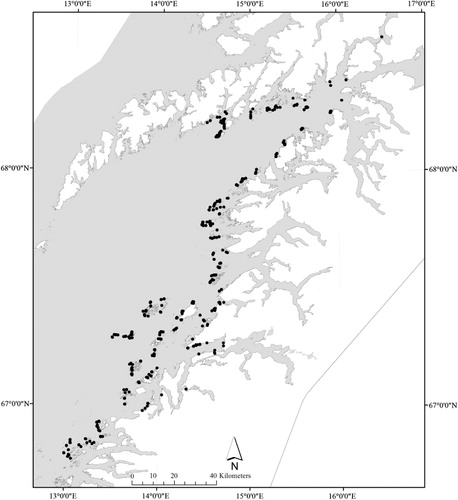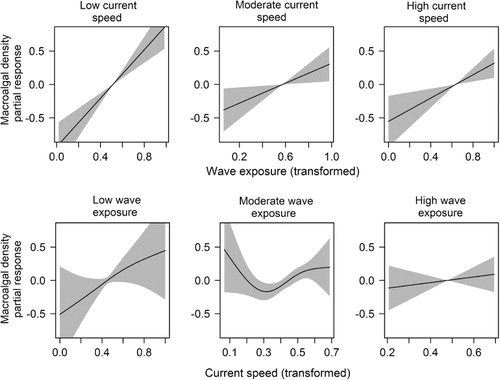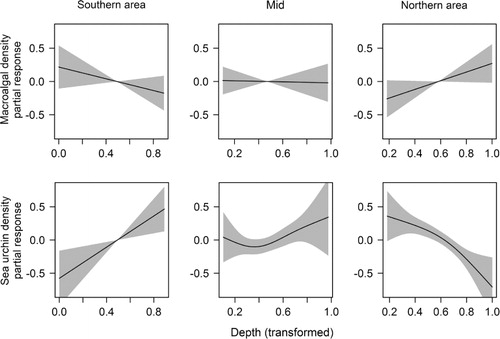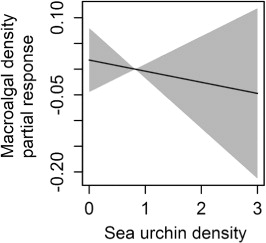Figures & data

Table I. Mean, standard deviation (SD), minimum and maximum values for the environmental variables used as predictors in the analyses.
Table II. Correlation matrix (Pearson's R) for the environmental variables.
Table III. Overview of the best models explaining the density of the epiphytic macroalgae on kelp (Laminaria hyperborea) stipes and the density of red sea urchins (Echinus esculentus). We present the models with ΔAICc < 4, i.e. the models receiving equally good support from the data (according to Burnham et al. Citation2011).



